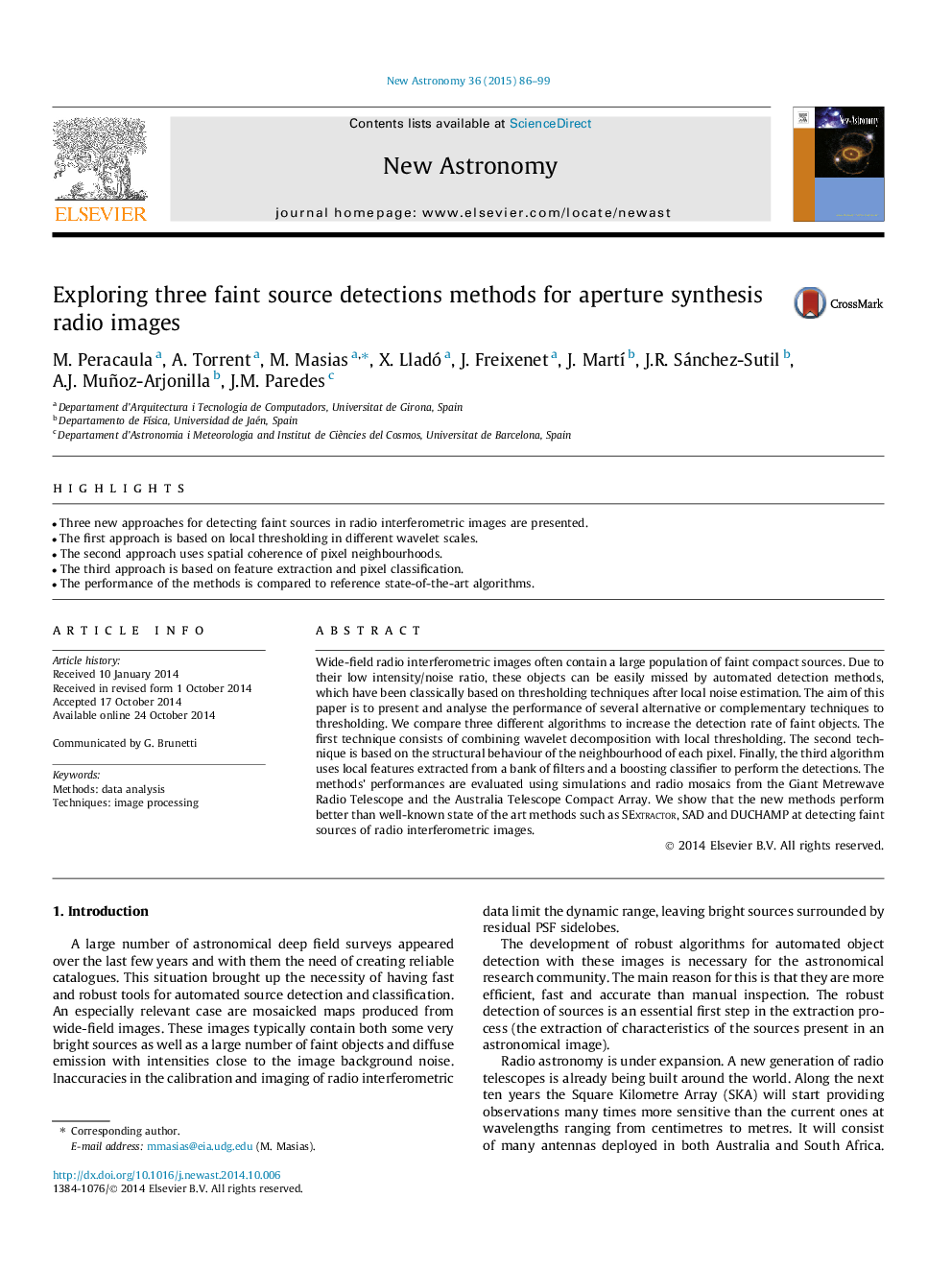| Article ID | Journal | Published Year | Pages | File Type |
|---|---|---|---|---|
| 1778885 | New Astronomy | 2015 | 14 Pages |
Abstract
Wide-field radio interferometric images often contain a large population of faint compact sources. Due to their low intensity/noise ratio, these objects can be easily missed by automated detection methods, which have been classically based on thresholding techniques after local noise estimation. The aim of this paper is to present and analyse the performance of several alternative or complementary techniques to thresholding. We compare three different algorithms to increase the detection rate of faint objects. The first technique consists of combining wavelet decomposition with local thresholding. The second technique is based on the structural behaviour of the neighbourhood of each pixel. Finally, the third algorithm uses local features extracted from a bank of filters and a boosting classifier to perform the detections. The methods' performances are evaluated using simulations and radio mosaics from the Giant Metrewave Radio Telescope and the Australia Telescope Compact Array. We show that the new methods perform better than well-known state of the art methods such as SExtractor, SAD and DUCHAMP at detecting faint sources of radio interferometric images.
Related Topics
Physical Sciences and Engineering
Physics and Astronomy
Astronomy and Astrophysics
Authors
M. Peracaula, A. Torrent, M. Masias, X. Lladó, J. Freixenet, J. MartÃ, J.R. Sánchez-Sutil, A.J. Muñoz-Arjonilla, J.M. Paredes,
